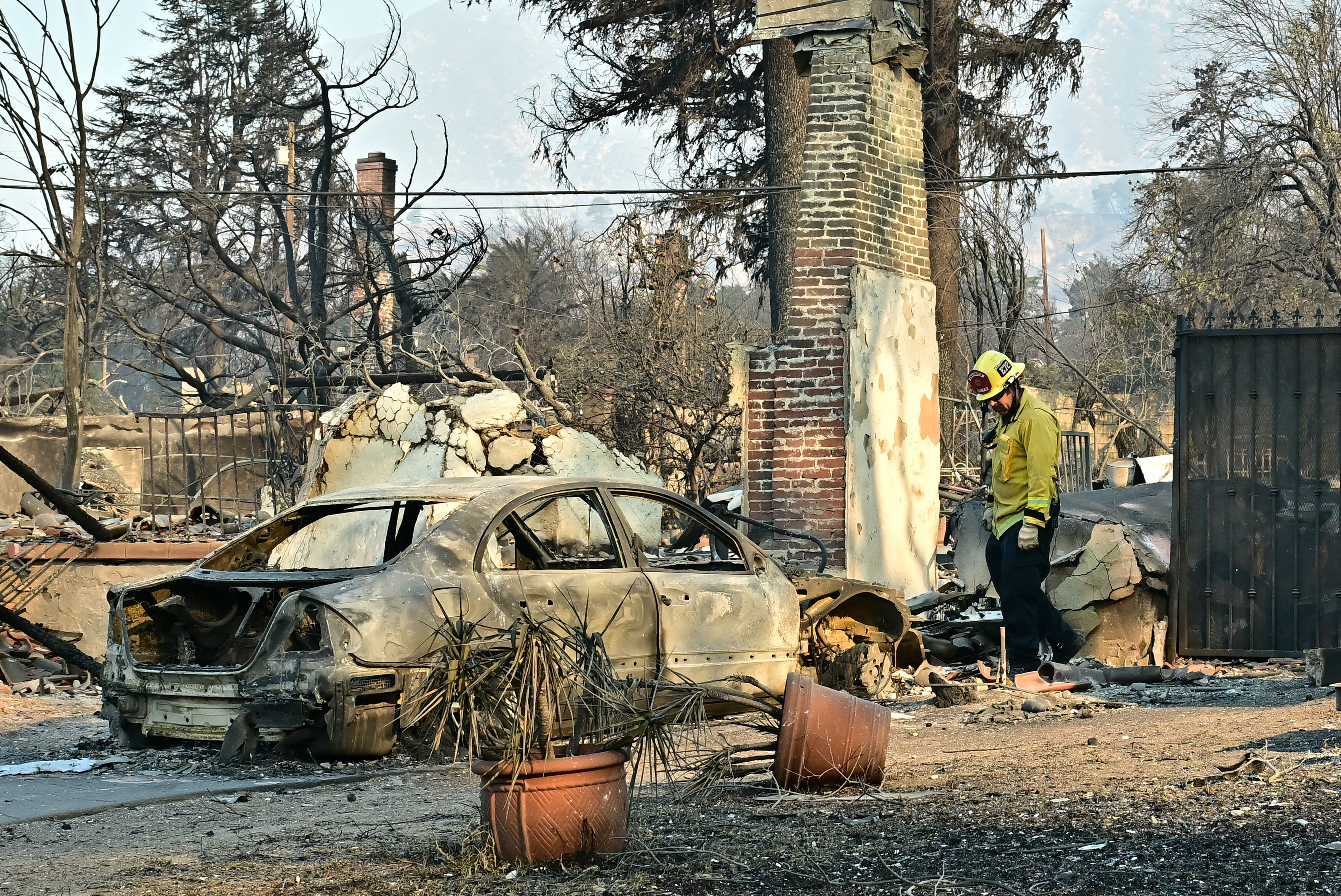With destructive wildfires continuing to impact the Los Angeles area, NBC Chicago’s Vi Nguyen shares ways you can help.
Editor's Note: Live updates on the fire from LA can be found here. Our story continues below.
Multiple destructive wildfires are continuing to impact the Los Angeles area Saturday, as temporarily subsiding winds were expected to aid firefighters before strong winds are forecasted to return next week.
Stream NBC 5 for free, 24/7, wherever you are.
At least 11 people have died from the fires, with all 11 deaths being attributed to the two largest fires - the Palisades Fire and the Eaton Fire, the former of which has left destruction in the picturesque Pacific Palisades neighborhood of Los Angeles, while the latter has destroyed scores of structures in Pasadena and Altadena.
While firefighters have continued to make progress on the fires Saturday, tens of thousands of residents remain under evacuation orders with the two largest fires only slightly contained.
How you can help those affected by the California wildfires
LA Fires containment: Latest percentages
The Eaton Fire near Pasadena that started Tuesday night was at about 14,100 acres early Saturday, with containment at 15%.
To the west in Pacific Palisades, the largest of the fires burning in the LA area was nearly 21,600 acres in size. As of Saturday morning, it was at 11% containment. The progress came as the flames reached Mandeville Canyon, with helicopter footage showing at least one home on fire in the area.
According to officials, the Hurst Fire, which has burned in the far north neighborhood in Sylmar, was at 70% containment Saturday morning. Officials said all evacuation orders connected to the fire had been lifted.
All of the major fires that have broken out this week are located in a roughly 25-mile (40-kilometer) band north of downtown Los Angeles, spreading a sense of fear and sadness across the nation’s second-largest city. No cause has been identified for the largest fires.
Feeling out of the loop? We'll catch you up on the news you need to know with the Chicago Catch-Up newsletter.
Several weather monitoring agencies announced Friday that Earth recorded its hottest year ever in 2024. “Hurricane Helene, floods in Spain and the weather whiplash fueling wildfires in California are symptoms of this unfortunate climate gear shift,” University of Georgia meteorology professor Marshall Shepherd said.
How does the Great Chicago Fire compare to Palisades fire? A look at the numbers
The level of devastation is jarring even in a state that has grown used to massive wildfires. A large portion of scenic Pacific Palisades has been obliterated. Dozens of blocks in the seaside neighborhood were flattened to smoldering rubble. In neighboring Malibu, blackened palm strands were all that was left above debris where oceanfront homes once stood.
At least five churches, a synagogue, seven schools, two libraries, boutiques, bars, restaurants, banks and groceries were burned. So too were the Will Rogers’ Western Ranch House and Topanga Ranch Motel, local landmarks dating to the 1920s.
The government has not yet released figures on the cost of the damage or specifics about how many structures burned.
AccuWeather, a private company that provides data on weather and its impact, on Thursday increased its estimate of the damage and economic loss to $135-$150 billion.
Crews also knocked down the Sunset Fire in the Hollywood Hills with the help of water drops from aircraft, allowing an evacuation to be lifted Thursday. The fire that sparked late Wednesday near the heart of the entertainment industry came perilously close to igniting the famed Hollywood Bowl outdoor concert venue.
Actors among those who lost homes
Many celebrities live in areas devastated by fire. Among those who lost their homes were Billy Crystal, Mandy Moore and Paris Hilton.
Jamie Lee Curtis pledged $1 million to start a “fund of support” for those affected by the fires that touched all economic levels from the city’s wealthy to its working class.
State seeing a longer fire season
California’s wildfire season is beginning earlier and ending later due to rising temperatures and decreased rainfall tied to climate change, according to recent data.
Dry winds, including the notorious Santa Anas, have contributed to warmer-than-average temperatures in Southern California, which has not seen more than 0.1 inches (2.5 millimeters) of rain since early May.



